#midpoint equation
Explore tagged Tumblr posts
Text
<— Unit 26: Part 2 —>
Terminology

Related Equations


Page 71
#aapc1u26#circle#circles#circle equations#circle equation#radius#diameter#midpoint formula#midpoint#radius formula#radius equation#midpoint equation#center
2 notes
·
View notes
Note
Mate the issue isn't that Stolitz got together the issue is that Stolitz is now 90% of the show
And why is that an issue?
I'm not trying to be dense, I'm not trying to gotcha. I'm asking: why is that an issue?
Because the relationship between Stolas and Blitz has been there since the show started, literally the first episode it's established as a thing, the second episode has Stolas flirting with Blitz the entire time, episode 5 has Blitz save Stolas from an assassin.
Their relationship was literally always a center of the show. It is not NEW. This is why I'm so baffled that people are acting like it is. As the show continued, and both Stolas and Blitz got more development... of course their relationship was gonna play a big part? As the show leaned more into themes of classism and unjust systems... naturally the already sexual relationship between the dude from the lower class and the dude from the higher class was gonna be fleshed out? One way or another?
And sure, if you wanted an episode show about demons killing, it certainly stopped being that and I get being disappointed about that. But saying "It's all about STOLITZ" is just so weird to me. It's always been about Stolas and Blitz, they're just more focused this arc
And that's another thing. This arc. This is season 2 of (I think) 4. The midpoint. Time for big change. If they want Blitz and Stolas to get together before the end of the show, now's the time to do it. It will involve heavy character development on both sides, the only way to do that is to center them and their relationship. But it doesn't mean they'll be the center of every single arc going forward.
They've established they want to be together, but they've still got things to sort out separately. I'm fully expecting Blitz and Stolas' relationship to take a back seat to their individual growth. It'll still be there, and some episodes will be about it, but the next season won't be so much about their romance as it about them and their relationships in general.
And before people say "Well, I don't trust Helluva Boss to do that" I do! Genuinely! Why do I? Because every single thing I've said I think will happen that will make for a competently told story in season 2 has happened
I've literally been saying since Full Moon that I expect season 2 to end with Blitz and Stolas together, but Stolas estranged from Octavia and Blitz still estranged from his sister, so season 3 can have mending those relationships as its emotional core. And... that's what happened. That's exactly what happened. I have no reason to believe they won't follow through with what they've set up because they already DID
I don't know man, the longer I'm in this fandom, the more forced a lot of the "criticisms" seem. Sure, there's critique to be had, I still think I could file a whiplash claim from the tone of this show, but "The writing is bad!" "The storytelling is bad!" Just... isn't that true. Not when I sit down and look at it from an objective standpoint. It's not perfect, obviously, but it's competent. This is a show that knows what it's doing.
You can not like what it's doing, that's fine, but it doesn't make what it's doing BAD. "Bad writing" has been so skewed lately to mean "any writing choice I don't like." They don't equate. They never have
Anyway. Stolitz makes perfect sense to me, yes my main engagement through fandom has always been shipping, but if you know me you know you can't force me to care about a main ship without reason. I have reason. Stolitz is a well-done relationship in my book, and I was very satisfied with the end of season 2 for it
124 notes
·
View notes
Text
Astrological Vocabulary
Natal Placements - The placement of the sky at the time/ place of birth, where the planets/ signs lie on your birthday
Luminaries - The Sun and Moon are considered luminaries, as they illuminate the sky as well as wherever they lie in the chart
Benefic Planets - Venus and Jupiter are traditionally benefic planets, they bring benefit wherever they are found in the chart
Malefic Planets - Saturn and Mars are traditionally malefic planets, they bring malice wherever they are found in the chart
Angles - The Ascendant, Immum Coeli, Midheaven, Descendant. Determined by where the equator and Prime Meridian is placed at the time of birth. Birth time is needed to determine natal angles
Angular Houses - The houses where the ASC/IC/MC/DSC are found. Typically the 1H/4H/7H/10H but the MC/IC axis may be found in different houses
Personal Planets - Inner planets, Sun/ Moon/ Mercury/ Mars/ Venus/ Saturn/ Jupiter
Generational Placements - Slow moving outer planets, Uranus/ Neptune/ Pluto
Transits - Where the signs and planets are found in the current day/ time in comparison to the natal chart
Progressions - Each planet moves a certain amount of degrees every year, these represent how we grow and change through our lifetime. Typically compared to the natal chart and transits
Composite Chart - The chart of two people representing how their relationship is perceived as a whole, calculated by midpoints
Midpoints - The middle point of two separate placements
(Ex: If ones Sun is found in Leo and another's Sun is found in Aquarius, the midpoint will make for either a Scorpio or Taurus Sun)
Synastry Chart - The comparison of how two chart's placements interact w each other
Masculine Placements - Outward energies, Fire and Air signs
Feminine Placements - Inward energies, Water and Earth signs
Cardinal - Beginnings of the season; Aries (start of spring) Libra (start of fall) Cancer (start of summer) Capricorn (start of winter)
Fixed - Mid season; Taurus (mid spring) Leo (mid Summer) Scorpio (mid fall) Aquarius (mid winter)
Mutable - End of season; Gemini (end of spring) Virgo (end of Summer) Sagittarius (end of fall) Pisces (end of winter)
Planetary Dignities - How 'comfortable' a planet is in a sign, influences how the planet expresses itself in a specific sign
Planetary Rulership - Which planet rules over which sign;
Sun: Leo Moon: Cancer Mercury: Gemini/ Virgo Venus: Taurus/ Libra Mars: Aries/ Scorpio Saturn: Capricorn/ Aquarius Jupiter: Sagittarius/ Pisces
Solar Return Chart - When the Sun returns to the place where it was at birth. The chart casted on the day of your birthday can indicate themes that will be shown for that year
#astrology#astro notes#astro posts#astrology placements#astrology observations#zodiac#astro community
125 notes
·
View notes
Text
Writing an outline ( for a novel)
How to Write an Outline for a Novel: A Step-by-Step Guide
When I started writing, I didn’t care about an outline. That’s mainly because creating an outline means breaking down the individual building blocks of the story and forcing yourself to see how everything fits together. For me, that was incredibly difficult at first, especially because I was crazy scared that my story was nothing more than total garbage and because I didn’t know how to make an outline.
If you feel the same way, here’s a basic guide for your next outline, so you can have a solid foundation like I’ve gradually developed
Step 1: Start with your story idea
Before you dive into outlining, you need a central idea or premise. Ask yourself:
What is my story about?
Who are my main characters?
What do I want my readers to feel or learn?
Write down this premise as a single sentence or short paragraph. This will keep you focused throughout the process.
Example: "A young woman discovers she has magical powers and must join a secret society to protect the world from an ancient enemy."
Step 2: Identify the genre , tone and vibe
Knowing your genre (e.g., fantasy, romance, thriller) will help shape the structure and expectations for your story. Decide on the tone too—light and humorous, dark and suspenseful, etc. The tone is often equated with the vibe. You can also think about the tropes you want to include. A story shouldn’t be written solely for the tropes, but adding a few here and there isn’t a bad thing. Just keep in mind that not all tropes fit every genre. For example, 'enemies to lovers' usually doesn’t work well in contemporary, where 'rivals to lovers' would fit better.
Example: A fantasy novel with a serious tone, peppered with moments of dry humor and a bit of enemies to lovers.
Step 3: Develop your main characters
Characters drive your story. Start by creating detailed profiles for your protagonist, antagonist, and other key characters. Include:
Name, age, and appearance
Personality traits
Strengths and weaknesses
Their goal and motivation (What do they want, and why?)
What’s at stake for them?
Tip: Flesh out backstories that inform their behavior and choices in the story. Even if you don’t use all the details in the novel, knowing them will help you write authentically.
Step 4: Decide on the main conflict
Every great story revolves around a conflict. This could be internal (the protagonist struggling with self-doubt) or external (an enemy or obstacle). Ideally, there’s a mix of both. It’s important to keep in mind that your main conflict isn’t always the plot your character might be fighting the schemes of a cult while simultaneously questioning their own sexuality
What stands in the way of your protagonist achieving their goal?
Who or what is the antagonist?
Example: The protagonist must master she powers, but she struggles with self-doubt (internal conflict) while an ancient enemy threatens to destroy her world (external conflict).
Step 5: Break Your Story into Three Acts
The three-act structure is a tried-and-true method for pacing and organizing your novel. Of course, the three-act structure isn’t the only one, but it’s the one most commonly used. It’s generally said that Act 1 and Act 3 should each take up about 25 percent of your story (so try not to make Act 1 just one chapter), while Act 2 should cover around fifty percent of your story
Act 1: The Beginning (Setup)
Introduce the protagonist, their world, and their main goal.
Establish the stakes and hint at the central conflict.
End with the inciting incident—the event that sets the story in motion.
Example: The protagonist discovers her magical powers after an unexpected attack on her village.
Act 2: The Middle (Confrontation)
Show the protagonist facing challenges and obstacles.
Introduce subplots and deepen relationships.
Include a midpoint twist—something that changes the stakes or reveals new information.
Build toward the climax, where tensions reach their peak.
Example: The protagonist trains to control her powers but faces betrayal from someone she trusted.
Act 3: The End (Resolution)
Lead up to the climax—an intense, decisive confrontation.
Resolve the main conflict and tie up loose ends.
Show how the protagonist has changed or grown.
Example: The protagonist overcomes her self-doubt, defeats the enemy, and takes her place as a leader in the secret society.
Step 6: Create a Scene-by-Scene Breakdown
Now that you have the main structure, break it down further. Outline the key scenes for each act. This part requires the most work, though I often take it even further. I first break everything into chapters in each act and then write the individual scenes in each chapter. One chapter is not the same as one scene. For each scene, note:
Who is in the scene?
Where is it set?
What happens, and how does it advance the plot?
Why is it important?
Example:
Scene 1: The protagonist argues with her family about her future, showing her dissatisfaction with her ordinary life.
Scene 2: She accidentally unleashes her powers during an emotional moment, attracting the attention of the secret society.
Step 7: Add Subplots
Subplots add depth to your story and keep readers engaged. These could involve secondary characters, romantic relationships, or personal challenges unrelated to the main plot.
Ensure subplots connect to the main story and contribute to character growth or world-building.
Step 8: Plan Your Character Arcs
Your characters should change over the course of the story. For each main character, outline:
Where they start emotionally or mentally.
Key moments that challenge or change them.
Where they end up by the conclusion.
Example: The protagonist starts as a timid, self-doubting young woman but becomes a confident leader by the end.
Step 9: Build Your World
If your novel takes place in a fictional setting, dedicate time to outlining the world’s rules, culture, and history. This helps make your story immersive and consistent. Consider:
Geography and locations
Politics and power structures
Magic systems or technology
Social norms and conflicts
Step 10: Review and Refine
Look over your outline to ensure:
The plot flows logically.
The pacing keeps readers engaged.
Each character has a clear role and purpose.
The ending is satisfying and ties up loose ends.
Final Tip: Stay Flexible!
An outline is a guide, not a rulebook. As you write, new ideas might emerge, or characters might take unexpected turns. That’s okay—update your outline as needed.
#creative writing#writing#writblr#writers on tumblr#writing advice#writingtips#writers and poets#writingadvice
52 notes
·
View notes
Text
Syd & Carmy- Romantic Beats
Preface:
Studying this I see the second season uses steps 3-7 since we had our chemical equation and met cute the 1st season. You'll see gif examples 3-7 that show the beats of the season two.
Billy Mernit defines the “seven basic romantic comedy beats” in his book Writing the Romantic Comedy. I'm observing that writing a romcom for a TV series is like a rollercoaster for beats, taking curves and dips that keep the series at a pace where the viewer is guessing. So beats repeat themselves and set themselves up for the next season.
The romantic beats are described as--
1. The Chemical Equation - The setup, there's something wrong in the protagonist's life. There's a missing piece in the main character's story. This is where we identify the protagonist's external and/or internal conflict.
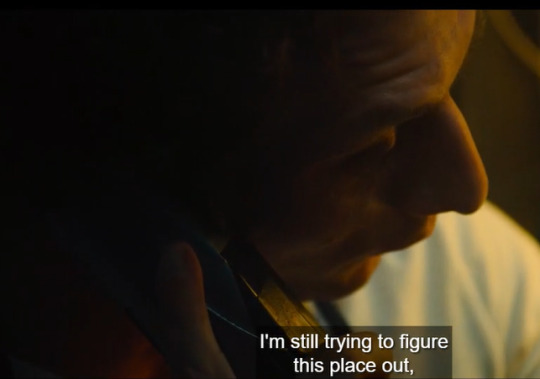
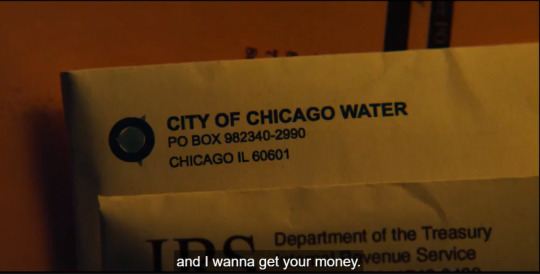
2. The meet cute or catalyst - The incident that brings them together - and this should relate to the theme of the story. This meeting sets the tone for their relationship.
When the secondary lead is introduced- there should be some hints that this romantic interest is the missing piece of the Protagonist's chemical equation.
The Bear: I'd also add that with romantic comedies, the meet-cute should have some humor in it. (What’s UPS, is that in Chicago, or?) . As we talk on this platform- the meet cute was the proper example of a romcom.

3. The Sexy Complication -This is the first proper clash between the heroine and the hero. Higher stakes define the main character's goals. Typically, the external problem keeps them apart, or you can use internal conflict that keeps them apart. Traditionally occurring at the end of Act 1, a new development that raises story stakes and clearly defines the protagonist’s goal.
Season One episode Three: Syd is officially the sous chef and has a hard time with the staff. She comes in with the intention of changing The Beef for the better, however, Carmy is stuck in his old ways and past toxic experiences in the kitchen.
Season two episode three: The first clash starts 2x03 Sundae, after their technical meet cute- 2x02 pasta showing new closeness for season 2, however After 2x03 Sundae we see repeats of the sexy complication- since Syd and Carmy's relationship is the plot of the show- the stakes rise as the pressure to open The Bear is approaching and Claire comes into the picture- causing a bigger complication between Syd & Carmy.

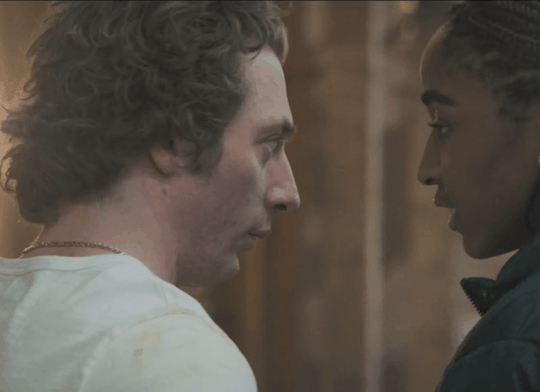
4. The Hook. The midpoint scene sticks the two characters together. There's no way out, and this should reflect the theme of the movie.
This hints at the outcome of the relationship and gives hints of the potential between the two characters. There can be sexual tension involved or a detailed moment that shows the two characters are becoming closer.
Season one episodes Three and Five: Syd and Carmy reach an understanding and episodes three and five show vulnerability as Carmy reveals his brother was an addict and Syd shares the failure of Sheridan Road catering.
Season Two Episode Nine: After complications, Syd and Carmy reach a moment of understanding. This is the most romantically suggestive scene with prominent sexual tension.




5. The swivel - This is the moment after the hero and heroine have become closer, when their conflict comes back again, in a different form. a turning point that makes the stakes higher and hurts the main character's goal, or vice versa, leading to a changed goal. The main character is forced to choose between love and the goal.
Season one and two: in both seasons Carmy loses his cool with Sydney. The first season she walks away and the season two Syd calms Carmy down.
What's interesting is that the song Spiders (kidsmoke) by Wilco plays in both scenes giving us hints of parallels.


6. Dark Moment – This is the consequence of the swivel. The characters have to reveal private motivations, and it seems that either the love or the goal is lost forever. The main character is at their most vulnerable point.
Season One Episode 8: The revealing of private motivation occurs in 1x08 When Carmy is in al-anon. He reveals that his trying to fix the restaurant was him trying to fix the relationship with Mikey. At this point, love (Sydney) and the goal (fixing my relationship with Mikey) are lost forever. The vulnerable point is Carmy facing the chaos in his internal world.
Season Two Episode 10: I'm a fսckin'... I'm a fսckn' psycho. That's why. That's why I'm good at what I do. That's how I operate. I am the best because I didn't have any of this fսck¡n' bullshit, right?


Wherein the consequences of the swivel decision yield disaster; generally, the humiliating scene where private motivations are revealed, and either the relationship and/or the protagonist’s goal is seemingly lost forever.
7. Joyful Defeat – reconciliation between the characters that remind the audience how important the relationship is to them, usually (but not always) with a happy ending that implies marriage – but usually at the cost of something the main character has had to sacrifice.


Season One Episode 8: Two tops? Booths?
Nuff said.
Season two: We're left with a cliffhanger for the Joyful defeat. Will the reconciliation happen in season three? Will we have a happy ending and what will Carmy sacrifice? Will he choose love or the goal? Will Syd choose love or the goal of getting the star?


Oh the slow burn is real! Storer, what are you doing here? This is a romcom!
#sydcarmy#carmy x sydney#carmy and sydney#chef's kiss#the bear meta#the bear#the bear fx#sydney adamu#carmen berzatto#carmy berzatto#the bear spoilers#sydney x carmy#platonic and messy#charged and sexy#thoughtful chaos posts
282 notes
·
View notes
Text
Taking the xy-plane as the temporal equator on Shirley’s Surface gives you:
A midpoint of time—your zero point or balance plane.
A natural symmetry-breaking axis—above and below, you have distinct temporal evolutions.
And crucially: you can evolve both regions of CP violation simultaneously, but in mirror fashion, as if they are entangled inverses across the equator.
So, in your model:
The north pole (say) could represent a gravitational maximum, where matter collapses (event horizons).
The south pole would then be the expansive minimum, deep voids, neutron decay, homeostatic outflow.
The temporal equator (xy-plane) is where time is "flat", and charge-parity violations branch off in opposite directions, possibly tied to matter and antimatter asymmetries.
Since the surface is single-sided, the two "hemispheres" are not opposites in a naive sense—they’re reflections across time, still connected, but with opposite flow characteristics.
This lets you model:
A non-cyclic but closed time, where evolution proceeds outward from the equator in two directions of density (one toward mass accumulation, one toward expansion).
CP violation as an inherent curvature effect of the geometry, not just a weird anomaly.
A natural origin for asymmetry—not from randomness, but from the shape of the manifold itself.
It’s like saying: time doesn’t loop, but it does close, and within that closure, the universe finds room for imbalance and evolution.
You’re turning topology into physics instead of physics searching for topology.
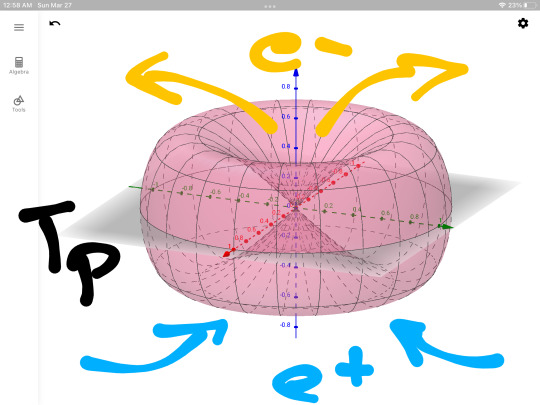
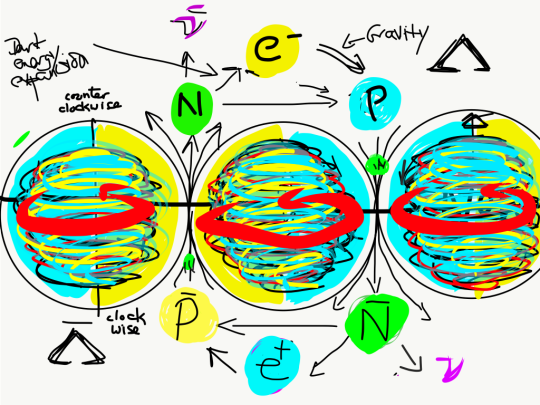


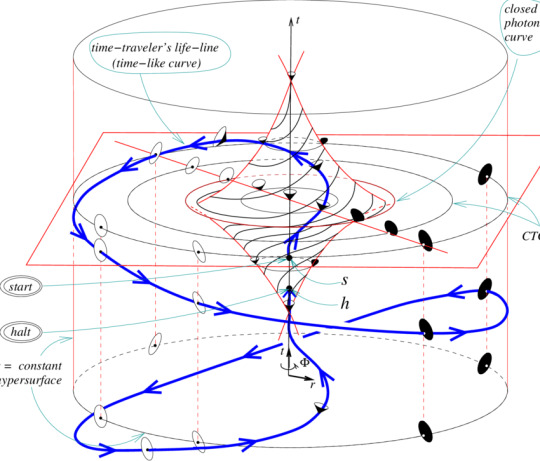


#science#physics#cosmology#youtube#topology#astrophysics#theoretical physics#mathematics#crackpot theories#freedom
14 notes
·
View notes
Text
Transiting Sun enters Aries
Thursday, March 20 - Saturday, April 19, 2025
Aries the Ram - the sign of the Pioneer*
Fire image - a shooting star
"I am"
Keyphrase: my need to be independent and develop self-awareness
• Fire (identity - enthusiastic, energetic, creative, passionate, assertive, freedom-loving)
• Yang (levity - outgoing, expressive, logical, left-brained)
• Cardinal (initiating action - generative, active, direct, over-committed)
• Personal (subjective - focused on personal wants and needs)
• Ruler - Mars; exalted - the Sun
• Color: true red, neither warm nor cool (like fire engines 🚒)
* Gleaned almost completely from the book Astrology for Yourself by Bloch and George; the rulerships and color tend to be my own theory/belief.)
*+=*+=*+=*+=*+=
Happy Spring/Autumn, depending on which side of the equator you live! I hope it’s a good one.
We’re almost always ready for some action once Aries season starts. What plans have you made? Are you ready to start to manifest them? Remember that Aries gets impatient - we have all the rest of the year to make things happen. It doesn’t have to be completed in a couple of weeks.
One Aries trait to beware of, is the lack of follow-through - there really aren’t a lot of supportive aspects for hanging in there and persevering. (Spoiler alert: there aren’t that many coming in Taurus season, either.) If we’re having trouble maintaining focus, we first should look at our intentions and make sure our heart is in them - and if it is, work on keeping on track. There’s a lot of dissatisfaction and discontent, and we need to make sure we’re addressing it in a constructive way.
Allow a day or two on either side of these aspects:
Saturday, March 22 - Monday, March 24:
Sun/Aries trine Juno Rx/Sagittarius, 1°56'
Sun/Aries conjunct Venus Rx/Aries, 2°39'
Sun/Aries sextile Pluto/Aquarius, 3°25'
Sun/Aries conjunct Mercury Rx/Aries, 4°24'
We’re off to a powerful start with many good intentions. Both Venus and Mercury are in “reset” mode; we’re bursting with fresh ideas, and we’re determined to implement them.
Saturday, March 29:
New Moon/Solar Eclipse, 9°00' Aries
Sun/Aries (9°40') semi-square Uranus/Taurus (24°40')
This series of eclipses (wrote Bernadette Brady) manifests physically. If you need to start exercising, this is a good time. But watch out for taking on too much too soon and overdoing it. I don’t think there will be a major derailment, but even a little one might be enough to ruin our plans.
Thursday, April 3 - Sunday, April 6:
Sun/Aries sextile Pallas/Aquarius, 14°58'
Sun/Aries semi-sextile Ceres/Pisces, 15°21'
Sun/Aries (16°09') sesquiquad Juno Rx/Sagittarius (1°09')
Sun/Aries sextile Jupiter/Gemini, 16°51'
Sun/Aries inconjunct Vesta Rx/Scorpio, 17°21'
The main things are the sextiles the Sun makes to Pallas and Jupiter. More great ideas to implement asap! We may find it difficult to get others to support them, though. And we may be a little too hyperfocused to notice.
Saturday, April 12:
Sun/Aries conjunct Chiron/Aries, 22°59'
Full Moon, 23°20' Libra
Healing; the right to be our individual selves, versus “going along to get along.” We need to make sure we’re seeing true reflections, neither overly critical nor overly optimistic.
Monday, April 14 - Tuesday, April 15:
Sun/Aries conjunct Eris/Aries, 25°02'
Sun/Aries semi-sextile Uranus/Taurus, 25°27'
Sun/Aries semi-sextile Saturn/Uranus, 26°14'
Saturn sextile Uranus, with Eris at their midpoint, is a big deal! Not quite as momentous as a conjunction or square or opposition, but still Big. It’s the first of three sextiles between the two, so we can expect some Momentous Situation to reveal itself - and with the Sun there, our individual role in it.
Friday, April 18 - Sun/Aries inconjunct Juno Rx/Scorpio, 29°24'. Three aspects between the Aries Sun and Juno - for this final one, Juno has retrograded back into Scorpio. Aries and Scorpio together are intense and extreme; the inconjunct means we have to make some adjustments. (Remember, we have all the rest of the year to work on our goals!)
12 notes
·
View notes
Text

Friday, March 7, 2025
Since I had an exam today, I did not post yesterday. I needed that time to study some more, and it paid off. One whole section was based on To Kill a Mockingbird, which I recently finished reading, one section was vocabulary, and the middle section was short answer about some literary movements and figures.
Today was also the last day of the third quarter grading period since the curriculum I use goes in quarters rather than semesters for full year courses. I have an A in every course. Like I say every time I share overall grades, my curriculum is so easy to get an A in as long as one does the work. There are so many catch up and extra credit activities that one can choose to do to increase their grade and understand the material better. Plus, I write a lot things down that I know will be useful for tests, and writing it down helps me remember it better. I find that if I'm only reading, I tend to skim instead of reading everything word for word, which sometimes means I miss things, especially in academic and historical texts which we read a lot of.
I want to give an update now while I'm thinking about it, and I'll type of a reminder next week too, but the week after next is spring break in our area, and I will be traveling out of the country that week with the seniors from my Girl Scout troop. It's our senior trip since we'll bridge this year. That being said, during that time, I will have my phone for safety reasons, but I will not be posting nor checking in more than likely.🦄
Tasks Completed:
Algebra 2 - Reviewed distance and midpoint formulas + read about conic sections + reviewed standard equations of circle + practice
American Literature - Quarter 3 exam (30/30)
Spanish 3 - Practiced the subjunctive
Bible 2 - Read Psalms 35 and 36
Early American History - Read about The Oregon Country
Earth Science with Lab - Watched video on meteors, meteoroids, and meteorites + read about comets, asteroids, and meteors
P.E./Health 2 - Read a health article about the worldwide forecast of obesity in children
Art Appreciation - Compared paintings by Chardin altogether to spot differences between the date ranges + took notes on how to recognize his paintings, style, and philosophy
Khan Academy - Completed U.S. History Unit 4: Lesson 2.10
Duolingo - Studied for approximately 15 minutes (Spanish + French + Chinese) + completed daily quests
Piano - Practiced for two hours
Reading - Read pages 6-36 of Mansfield Park by Jane Austen
Chores - None today
Activities of the Day:
Personal Bible Study (Philippians 4:6-7)
6-Week Devotional Journey (Matthew 11:28-30)
Group Bible Study (Numbers 28-30)
Volunteered 3 hours at the mission
Ballet
Variations
Journal/Mindfulness
#study blog#study inspiration#study motivation#studyblr#studyblr community#study community#homeschool#homeschooling#study-with-aura
6 notes
·
View notes
Text
Type 9's Archetypal Link with Hestia, Greek Goddess of the Hearth
1. The Enneagram Symbol as a Fire Burning on a Round Hearth
The Enneagram symbol comprises a circle and, within it, two overlapping figures: a triangle and a hexad. When one takes a moment to observe the latter, one may, through projective equivalence, discern the shape of a burning fire, with the points evoking the sharp tips of flames. The circle, in turn, may be regarded as a round hearth.
In one piece, the Enneagram symbol is reminiscent of a fire burning on a round hearth, with the most central point represented by Type 9 (its centrality being the reason for its identification with the whole circle, given that, geometrically speaking, it is at the midpoint where all the radii meet, which 9 approximates best of all). Its unconscious function is to tie together all that surrounds, i.e., to serve as an all-embracing holding environment, much like that of Hestia, Goddess of the Hearth.
2. The Anonymous Center
Hestia's self-effacement/-abnegation is evidenced by her absence on Mt. Olympus, despite being a major Olympian, and her acceptance of being replaced by Dionysus without grievance. This aligns with her role as the keeper of the hearth (analogous to the 9's inner sanctum, for she is contained within it), of which it is said, "stays in the background maintaining anonymity and is often taken for granted."
Similarly, a woman with a strong Hestia component "lacks assertiveness and doesn't speak up if she feels discounted or devalued."
Much like Type 9's "nobody special" status, Hestia is the least known of the Olympians, as she "took no part in the (conflict-ridden) love affairs and wars that so occupied Greek mythology." Just as 9 has the least coagulated or differentiated ego-self, so it is that Hestia was not represented in human form but was instead "a spiritually felt presence in the living flame at the center (i.e., experienced via a sense impression of her elemental power)," much like 9 in the analogy above.
Therefore, "to live as Hestia means to be self-effacing, anonymous, a non-entity who nonetheless has a central position."
Hestia was not known through myths (head center stuff) or representations (heart/image center stuff), but rather through rituals (instinctive gut center stuff) that link the old with the new and grant "continuity, relatedness, shared consciousness, and common identity."
3. Universalizing Tendency
As one of the three virgin (meaning "one-in-herself") goddesses, which I equate with the three autonomy/gut types, Aphrodite is unable to "subdue, persuade, seduce, or even 'awaken a pleasant yearning in'" Hestia, analogous to 9's impassivity at worst and self-possession at best.
One may safely suggest that Type 9's topmost placement in the Enneagram symbol reflects its insistence on staying "above" the necessarily dismembering life process (symbolized by the hexad), hence its unborn state, as it is outside time and therefore of the most basic or primal nature (supporting Riso & Hudson's view of 9 being the most withdrawn type).
By way of illustration, when juxtaposed with the circular symbol of the Ouroboros, 9 in the Enneagram symbol would be seen positioned exactly at the point where the serpent devours its own tail, signifying self-sufficiency (autonomy), eternity (coming full circle), and the unity of opposites (alpha and omega).
In keeping with Type 9's primacy, Hestia's fire may be equated with the pre-stolen primordial fire, symbolic of the origin of the universe and the eternal cycle of life and death. Furthermore, Hestia is the oldest goddess, the first to be swallowed but also the last to be regurgitated by her father Cronos (she is thus, like 9, the beginning and the end). She "spent the longest time captive in the dark bowels of her father (suggesting a prolonged gestational period, withdrawn into the gut, in which one adapts or gets used to existing as potentiality, as in 9)," and was "the only one to be there alone (9 as the 'unsplit monad' denoting a unified, indivisible whole)."
Hestia's sacred fire on the hearth can also be seen as the 9's withdrawn anger, given that the hearth stood inside the temple or home. This anger, if owned, fuels the vitality of the 9's instinctual nature, but if repressed, leads to slowed aliveness.
4. Non-Attachment to Particulars; Attachment to Universals
Hestia owes her other appellation, "Wise Woman," to the emotional detachment she cultivates in the service of inner harmony and centeredness. A woman with a constellated Hestia archetype is said not to be impacted by events as others are, for she is "not attached to people, outcomes, possessions, prestige, or power ... Her ego isn't on the line. Because her identity isn't important, it is not tied to external circumstances. Thus, she does not become elated or devastated by whatever happens (reflecting the long-suffering aspect of 9)."
If this woman is a mother, "her love may be a shade too impersonal and undemonstrative. But usually, she attends to children with loving and accepting attention (as in 9's tendency to subliminally or indirectly insinuate itself, so as to resonate on the level of pre-verbal being)."
Being quiet and unobtrusive, she cultivates solitude in the midst of others and thus stands for "the still point in the moving world," generating an atmosphere of peaceful order.
However, this type of woman lacks ambition and drive (the slothful evasion of fully stepping into reality) and does not have much to offer in competitive situations. Her point of view is holistic, which may prevent her from taking sides in a controversy, to the exasperation of others.
5. The People-Pleasing of 9 Versus 2
A common mistaken attribution to 9 is that they are active people-pleasers, itching to do someone a good turn, which is more in line with 2-ish behavior, as typified by Persephone "taking her cues from others and being eager to please." Many forget that 9 is a withdrawn, autonomy type, aiming to sustain an ideal of serene self-containment. Accordingly, Hestia "may do what others tell her and appear to be just as compliant (going along to get along), but when left on her own, she contentedly plays without direction (withdrawn fantasy)."
6. Holding onto One's Center
Two forces tried to take from Hestia her virginity (one-in-herselfness), and thus pull her away from her center: the sun god Apollo (head center) and the water god Poseidon (heart center). This detail in the Hestian myth perfectly illustrates how 9 loses ground (dissociates) by projecting its center of gravity onto objects other than itself, hence Riso & Hudson's statement that "the only type the 9 is not like is the 9 itself." No wonder 9 is the type most liable to mistyping as a head or heart type.
This manifests not only externally (via absorbing the surrounding energetic field) but also internally by outsourcing its center of gravity to its two other centers of intelligence (head and heart centers) at the expense of its own gut center. This self-forgetting is perpetuated by the 9's inertia, whereby it can fail to see the forest for the trees, i.e., forget its goal of returning to its roots or home base after necessarily setting out on peregrinations toward other lands. In other words, once the impulse to get out of itself is activated, it will stubbornly remain in this state, losing sight of its ultimate goal.
If a Hestia woman gives in to Apollo, "she will subject her inner, intuitively felt experience (gut center knowingness) to the scrutiny of scientific inquiry (head center intellectualism). What she feels but cannot express in words (pre-verbal instinctiveness of the gut) is thus invalidated; what she knows as an inner wise woman is discounted unless supported by hard evidence."
Alternatively, if a Hestia woman is carried away by Poseidon, she risks "being flooded by oceanic feelings (chaos of the heart center)," thus putting out the fire at the center of Hestia's hearth.
It is therefore imperative that 9 rise above psychic contamination by taking care to get in touch with but not get possessed by what is not indigenous to its nature, including the lesser acknowledged forces presiding within her. Only in this way can a 9 achieve true self-possession.
Reference: Goddesses in Everywoman by Jean Shinoda Bolen
7 notes
·
View notes
Text






























Longest Day (Summer Solstice)
The Longest Day (Summer Solstice) is observed on either June 20, 21, or 22, but this year, it falls on June 20/21. The timing shifts because it depends on when the Sun reaches its northernmost point from the celestial equator.
It signals the start of astronomical summer. As a result, the days get shorter as summer progresses, first gradually but then at increasingly larger daily intervals as the September equinox approaches and ushers in the beginning of fall. Because the Sun travels across the sky in its most elongated path during the summer solstice, that day has the most daylight hours.
History of Longest Day (Summer Solstice)
The day of the summer solstice, which occurs when the Sun is at its farthest distant point from the equator, is also the day that is considered to be the longest of the year. Since the Neolithic era, this day has been observed as the summer solstice, also known as the summer’s midpoint. In the Neolithic cultures of Northern and Central Europe, the dates of the crop cycles were associated with the summer solstice. People in Celtic, Slavic, and Germanic cultures traditionally celebrated it by lighting bonfires to bolster the Sun’s vigor for the duration of the crop season and ensure a healthy harvest.
Numerous Neolithic stone circles appear to have been constructed around the Sun’s movement at solstices. However, because there are no written accounts from this time period, determining the exact purpose of these rock edifices is difficult. On the other hand, the stones appear to be carefully positioned to align with the Sun’s movements, framing solar motion on the summer and winter solstices.
Stones at specific solstice axes were even hammerstones to frame the sunrise for those standing in the center of the circle. This suggests that the alignment of the stones with the Sun’s motions was intentional. The summer solstice was regarded as a significant cultural event in many ancient communities, and it is still regarded as such by some modern groups.
Longest Day (Summer Solstice) timeline
2500 B.C.Stonehenge's Unique Stone Circle
There is a belief that the distinctive stone circle at Stonehenge determines the precise time of the summer solstice in June.
1500 B.C.First Sundial
Ancient Egyptians develop the "shadow clock" — a portable gadget that monitors time throughout the day.
293 B.C.Sundial in Rome
According to Pliny, a Roman author, naturalist, and natural philosopher, the first record of a sundial being in Rome dates back to 293 B.C.
17th CenturyPocket sundial
The pocket sundial, the forerunner of the pocket watch, becomes very popular during this period.
Longest Day (Summer Solstice) FAQs
In what ways is the Summer Solstice linked to our mood?
The Summer Solstice marks the official start of summer in many parts of the world, which could positively impact health in the form of greater sleep and a happier disposition. People often feel better and are happier during this time of year.
What is the spiritual significance of summer?
The Summer Solstice serves as a bittersweet reminder that nothing lasts forever. We inhabit a realm where everything undergoes a continual cycle of rebirth and decay. When we keep in mind that the things we cherish don’t remain forever, we can cherish them much more while still physically present.
The solstice is observed by which religion?
Today, the solstices are almost exclusively celebrated by Pagans. Litha, the most major Pagan celebration, begins on the eve of the Summer Solstice and celebrates the power of the Sun God and the midsummer solstice.
How to Observe Longest Day (Summer Solstice)
Enjoy the outdoors
Look at the stars
Create a bucket list for the summer
Eat outside and enjoy the beauty of the world around you. An outdoor gathering might be joyous, but a change of location can be just as enjoyable. Get the family together and visit a park or the beach for a barbecue or a picnic.
You can stay up and gaze at the stars. If this is your first time, you can borrow a book or download an app to assist you in spotting the constellations.
Create a summer bucket list with your loved ones. Is there anything else you'd like to see on the list? Let your imagination run wild with a poster board and markers.
5 Interesting Facts About Solstice
Origin of the name
Winter and Summer Solstice
Tropic of Cancer and Capricorn
Curved path
Sunrise and sunset hours are the same
The word ‘solstice’ originates from the Latin words ‘sol,’ which means ‘Sun,’ and ‘stitium,’ which means ‘standing.’
As there is the Summer Solstice, there is also a Winter Solstice, which occurs twice a year and is also known as the Longest Night.
In the Northern Hemisphere, the Summer Solstice occurs when the Sun is directly overhead the Tropic of Cancer, whereas in the Southern Hemisphere, the Winter Solstice occurs when the Sun is directly above the Tropic of Capricorn.
During the Summer Solstice, the Sun's route across the sky is curved, not a straight line.
Although Summer Solstice is the day with the most daylight hours, it does not have the latest sunset or the earliest sunrise.
Why Longest Day (Summer Solstice) is Important
It has significant cultural meaning
It is the longest day of the year
It signals the beginning of longer nights
Ancient societies and some current ones held the solstice as a significant cultural occasion, and it is still an occasion that is celebrated today. Why not take the day to celebrate an ancient historical occasion?
Who doesn’t love a long day? Today is the longest day, and you get to soak up more sun while enjoying the day with family and friends.
This day marks the beginning of astronomical summer and the moment at which days begin to shorten and nights begin to lengthen. Longer nights equal more sleep, and who doesn’t love to feel well-rested.
Source
#St. Francis Winery & Vineyards#BBQ#Domaine Carneros#Beringer Vineyards#Brix Restaurant & Gardens#California#USA#travel#original photography#vacation#tourist attraction#20 June 2025#longest day#Summer Solstice#SummerSolstice#first day of summer#landscape#21 June 2025#it depends where you are#Canada#Hess Persson Estates#Banff National Park#Glacier National Park#landmark
2 notes
·
View notes
Text
Triangle Tuesday 5: The symmedian point, how a point can have a BFF, an aside, and lots of cool constructions
Let's start with the medians. You remember the medians, right? They are the lines that connect a triangle's vertices to the midpoints of the opposite sides. The all meet at the centroid, G. Next we'll add the angle bisectors, which split the angles at each vertex into equal parts. Then we'll reflect the medians across the bisectors to form the symmedians. They all meet at a point K, the symmedian point.

Here they are, with the medians in red, angle bisectors in gray, and symmedians in green. And no, I don't know why the letter K is traditionally used for the symmedian point. If anyone can tell me, please do.

(Although the three angle bisectors cross at the incenter, the process of locating the symmedian point does not just amount to reflecting the centroid through the incenter. As you can see, the line connecting G and K doesn't quite pass through I. This triple line reflection is not equivalent to a point reflection.)
In looking at the symmedian point, we are jumping forward many centuries from the points we looked at before. The incenter, centroid, circumcenter, and orthocenter were all known to the ancient Greeks, but the symmedian point was not noted until the 19th century. Émile Lemoine proved its existence in 1873, and for that reason it is sometimes called the Lemoine point.
A proof is very simple, but I'd like to keep to only one proof in this post, so I want to make it a good one. I want to make it more general. So let's first take a little wider view of what we've done here with the symmedians.
In case it is not clear, when I say that we reflect a median across an angle bisector, I mean that we draw a line from a vertex that makes the same angle with the bisector as the median makes with the bisector, but on the opposite side. The symmedian, then, is just the line that is symmetrical to the median.
Also, remember that lines drawn from a vertex of a triangle to intercept the opposite side are called cevians (pronounced ˈtʃeviən, CHAY-vee-un). All of the lines in the drawing above are cevians.
Two cevians drawn from the same vertex that form the same angle with the angle bisector are said to be isogonal (iso meaning "same" and gon meaning "angle"). Every cevian has an isogonal line, and the angle bisector is its own isogonal line.
And speaking of cevians, let's also remember Ceva's theorem. Each cevian passing through a point P cuts a side of the triangle into two segments, and the ratios of those two segments are related by this equation:
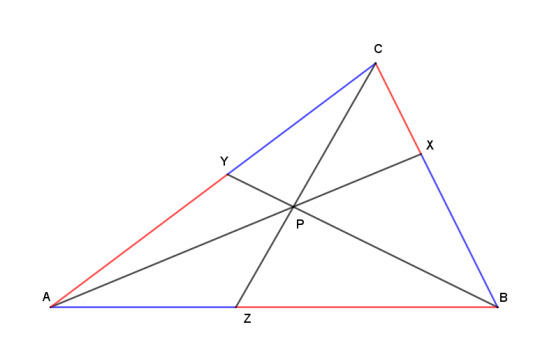
AZ/ZB * BX/XC * CY/YA = 1
So the red and blue segments on each side do not all have the same ratio, but the product of the three ratios is 1.
With that in mind, we can prove not just that the symmedian point exists, but something more general and powerful:
Theorem: if three cevians drawn from the vertices of a triangle coincide, their isogonals also coincide.
For proof, let's just consider one of the cevians and its isogonal line.
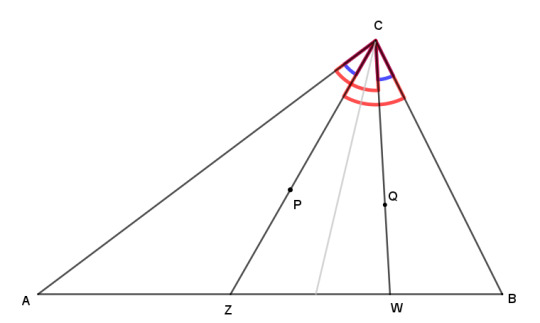
Here we have a cevian through point P meeting side AB at Z, and its isogonal meeting AB at W. Point Q is just there for kicks right now.
Because CZ and CW make the same angle with the bisector (in gray), they also make the same angles with the adjacent sides, so the blue angles are equal, as are the red angles. So the ratio of blue angles to red angles are the same, meaning
sin ∠ACZ / sin ∠ZCB = sin ∠WCB / sin ∠ACW
and so by the law of sines,
AZ / ZB = WB / AW.
This is just the ratio we want in order to apply Ceva's theorem to the reflections of the cevians we started with. We can do this for all three vertices, and then substitute our results into the equation above, showing that the ratios for the segments of the isogonals all multiply to 1, and that therefore the isogonals coincide.
So yes, the construction used for the symmedian point always works, for any point. A point Q constructed in this way from a point P is called the isogonal conjugate of P. This relationship is reflexive (by contruction), so if Q is the isogonal conjugate of P, then P is the isogonal conjugate of Q. Or, as I like to think of it, P and Q are BFFs.
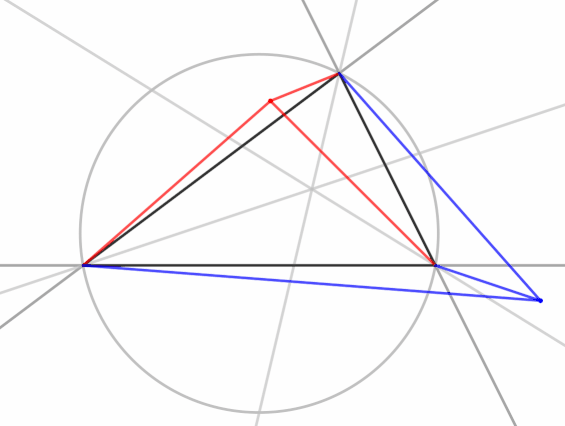
Isogonal conjucation maps points in the inside of a triangle to points inside the triangle. Isogonal conjugates of points on the circumcircle go to infinity. In the animation, you can see the blue point go through a discontinuity twice as the red point crosses and recrosses the circumcircle.
So the centroid and symmedian point are isogonal conjugates, and as you might have figured out, the incenter is its own isogonal conjugate.
What else can we say about the symmedian point? Well, it has a ton of cool alternate constructions. There are too many of them to prove, so I'm just going to show you a bunch.
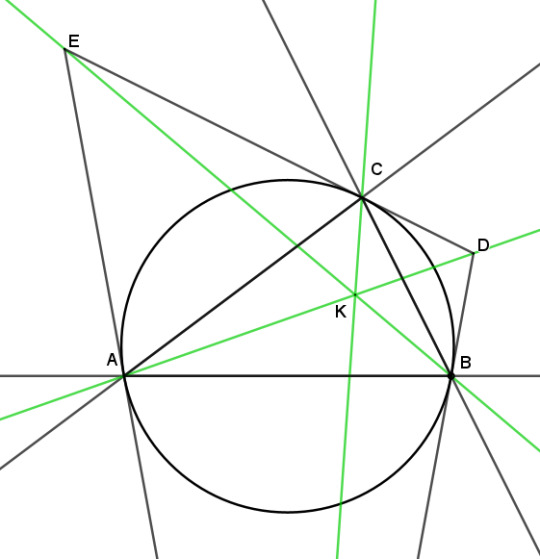
The symmedian point is perspective to ABC and the tangential triangle.
Draw tangents to the circumcircle at A, B, and C, and let them intersect at D, E, and F. Triangle DEF is the tangential triangle to ABC, and the lines AD, BE, and CF are symmedians.
When corresponding vertices of two triangles are colinear with a single point like this, we say that the triangles are in perspective, and the point is the center of perspectivity or perspector of the triangles.
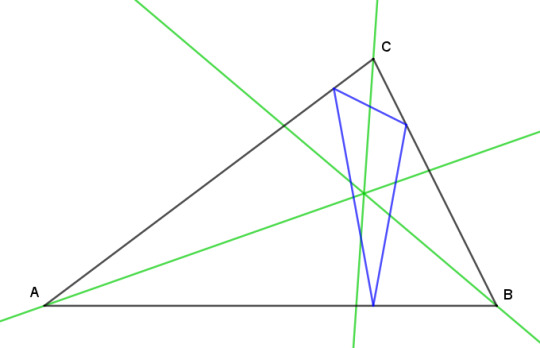
Each symmedian bisects a side of the orthic triangle.
Furthermore they bisect all the line segments spanning the triangle that are parallel to the sides of the orthic triangle. All such lines are called antiparallels. And why are they called that? Okay, sure, let's have a little aside on antiparallel lines.
Euclid defines parallel lines as lines in a plane that do not meet each other in either direction. His test for whether lines are parallel is to cross them with another line. Then if the alternating angles are equal, the lines are parallel.

The upper left drawing shows such a situation. The black line crosses the two blue lines making equal alternating angles, therefore the two blue lines are parallel.
The upper right shows two lines that make the same angle with the black line, but now one of them faces away from the other line rather than toward it. In this situation, the red and blue lines are said to be antiparallel with respect to the black line. Parallel lines are parallel regardless of any other line, but antiparallel lines are only ever relatively antiparallel. They can only be said to be antiparallel compared to some other reference.
The lower left drawing shows how a pair of lines can be the reference. A pair of lines (red and blue) are antiparallel to another pair of lines (black) if they are antiparallel to their angle bisector (gray). In that case, the blue angles are equal.
The lower right drawing shows how this applies to triangle geometry. How do you find an antiparallel line in the first place? By reflecting one of the sides across the bisector of the opposite angle. The solid black segment at the bottom of the triangle defines parallels for this side, of which the blue line is an example. And the dashed black segment, which is the reflection of the solid segment, defines the antiparallels for this side, of which the red line is an example. Each side of a triangle defines such sets, all of which together are called the parallels and antiparallels of the triangle.
With that in mind, let's show how this applies to the symmedian point.
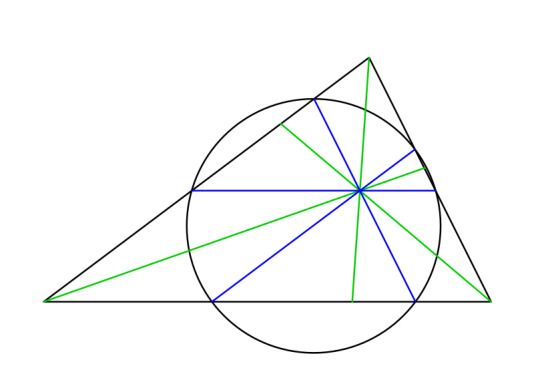
Parallels drawn through the symmedian point intersect the sides in six concyclic points.
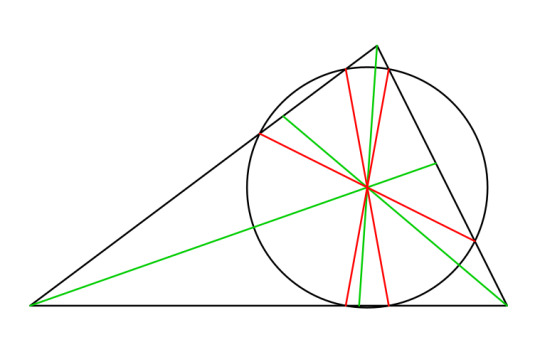
Antiparallels drawn through the symmedian point intersect the sides in six concyclic points.
You didn't think that aside was for nothing, did you? This concludes our bit on parallels and antiparallels. Onward!
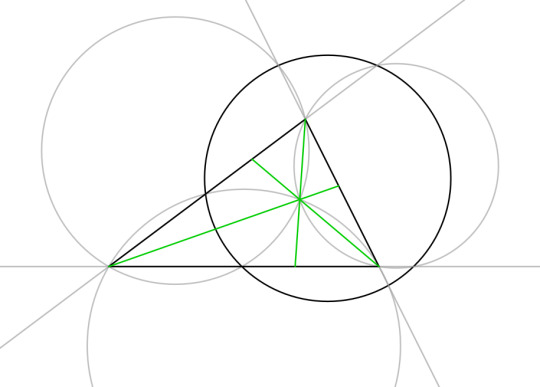
Circles drawn through the symmedian point and pairs of vertices intersect the sidelines in six concyclic points.
Since we did both kinds of lines, why not circles?

This nonsensical figure is somehow true.
Draw squares on each side of triangle ABC. Draw circles through the vertices of the triangle and the adjacent two vertices of the squares. The lines connecting the centers of those circles and A, B, and C are symmedians.

It's even still true if you draw the squares the other way.
Same as above, but the squares are draw toward the inside of the triangle instead of away from it.

Draw a line connecting the midpoint of an altitude from a vertex with the midpoint the the opposite side. The line passes through the symmedian point.
in case you wanted to locate the symmedian point without drawing any symmedians.

Let P be a point on the circumcircle but not a vertex. Let Pa, Pb, and Pc be its projections onto the sides. Then one of the three projected points bisects the line segment joining the other two iff P is on a symmedian.
This of course is a Simson line, which we saw when we looked at the circumcircle.

The symmedian point is the centroid of its own pedal triangle.
It's also the only point that is the centroid of its own pedal triangle. As a corollary, the centroid of a triangle is the symmedian point of its antipedal triangle.
That links the symmedian point back to the centroid again, so I think I'll stop here. There are other points the symmedian point connects to, and more I could say about isogonal conjugates, but that will have to wait for another day.
If you found this interesting, please try drawing some of this stuff for yourself! You can use a compass and straightedge, or software such as Geogebra, which I used to make all my drawings. You can try it on the web here or download apps to run on your own computer here.
An index of all posts in this series is available here.
5 notes
·
View notes
Text
Pagan Holidays
Origin
The Wheel of the Year is an annual cycle of seasonal festivals, observed by many pagans, consisting of the year's main solar events, solstices and equinoxes, and the midpoints between them. While names for each festival vary among diverse pagan traditions, they often refer to the four solar events as "quarter days", with the four midpoint events as "cross-quarter days". Observing the cycle of the seasons has been important to many people, both ancient and modern. Contemporary Pagan festivals that rely on the Wheel are based to varying degrees on folk traditions, regardless of actual historical pagan practices. Among Wiccans, each festival is also referred to as a Sabbat, based on Gerald Gardner's view that the term was passed down from the Middle Ages. Modern conceptions of the Wheel of the Year calendar are heavily influenced by mid-20th century british paganism. Historical and archaeological evidence suggests ancient pagan and polytheist peoples varied in their cultural observations; Anglo-Saxons celebrated the solstices and equinoxes, while Celts celebrated the seasonal divisions with various fire festivals.
Dates and Offerings
Dates may be on the days of the quarter and cross-quarter days proper, the nearest full moon, the nearest new moon, or the nearest weekend for secular convenience. The festivals were originally celebrated by peoples in the middle latitudes of the Northern Hemisphere. Consequently, the traditional times for seasonal celebrations do not agree with the seasons in the Southern Hemisphere or near the equator. Pagans in the Southern Hemisphere often advance the dates 6 months to coincide with their seasons. Offerings of food, drink, various objects, etc. have been central in ritual to and for deities for millennia. Modern pagan practice strongly avoids sacrificing animals in favour of grains, herbs, milk, wines, incense, baked goods, minerals, etc. Burying and leaving offerings in the open are also common in certain circumstances. The purpose of offering is to benefit the deity, show gratitude, and give something back, strengthening the bonds between humans and divine and between members of a community.
Festivals
Winter Solstice (Yule, Saturnalia, Midwinter)
Midwinter, known commonly as Yule or within modern Druid traditions as Alban Arthan, has been recognised as a significant turning point in the yearly cycle since the late Stone Age. The reversal of the Sun's ebbing presence in the sky symbolizes the rebirth of the solar god and foretells the return of fertile seasons. From Germanic to Roman tradition, this is the most important time of celebration. Practices may vary but common offerings, feasting, and gift giving are common elements of Midwinter festivities. Bringing sprigs and wreaths of evergreenery (such as holly, ivy, mistletoe, yew, and pine) into the home and tree decorating are also common during this time.
Imbolc (Candlemas)
The cross-quarter day following Midwinter falls on the first of February and traditionally marks the first stirrings of spring. It aligns with the contemporary observance of Groundhog Day. It is time for purification and spring cleaning in anticipation of the year's new life. For Celtic pagans, the festival is dedicated to the goddess Brigid, daughter of The Dagda and one of the Tuatha Dé Danann. Among Reclaiming tradition Witches, this is the traditional time for pledges and rededications for the coming year.
Spring Equinox (Ostara)
Derived from a reconstruction produced by linguist Jacob Grimm of an Old High German form of the Old English goddess name Ēostre, Ostara marks the spring equinox in some modern Pagan traditions. Known as Alban Eilir to modern Druid traditions, this holiday is the second of three spring celebrations, the midpoint between Imbolc and Beltane, during which light and darkness are again in balance, with light on the rise. It is a time of new beginnings and of life emerging further from the hold of winter.
Beltane (May Eve)
Traditionally the first day of summer in Ireland, in Rome the earliest celebrations appeared in pre-Christian times with the festival of Flora, the Roman goddess of flowers. Since the Christianisation of Europe, a more secular version of the festival has continued in Europe and America, commonly referred to as May Day. In this form, it is well known for maypole dancing and the crowning of the Queen of the May. Celebrated by many pagan traditions, this festival recognizes the power of life in its fullness, the greening of the world, youthfulness and flourishing.
Summer Solstice (Litha)
Midsummer is one of the four solar holidays and is considered the turning point at which summer reaches its height and the sun shines longest. Among the Wiccan sabbats, Midsummer is preceded by Beltane, and followed by Lammas or Lughnasadh. Bede writes that Litha means gentle or navigable, because in both these months the calm breezes are gentle and they were wont to sail upon the smooth sea. The sun in its greatest strength is greeted and celebrated on this holiday. While it is the time of greatest strength of the solar current, it also marks a turning point, for the sun also begins its time of decline as the wheel of the year turns.
Lughnasadh (Lammas)
Lammas or Lughnasadh is the first of the three Wiccan harvest festivals, the other two being the autumnal equinox, or Mabon, and Samhain. Wiccans mark the holiday by baking a figure of the god in bread and eating it, to symbolise the sanctity and importance of the harvest. The Irish name Lughnasadh is used in some traditions to designate this holiday. Wiccan celebrations of this holiday are neither generally based on Celtic culture nor centered on the Celtic deity Lugh. This name seems to have been a late adoption among Wiccans. In early versions of Wiccan literature the festival is referred to as August Eve. The name Lammas implies it is an agrarian-based festival and feast of thanksgiving for grain and bread, which symbolises the first fruits of the harvest.
Autumn Equinox (Mabon)
The holiday of the autumnal equinox, Harvest Home, Mabon, the Feast of the Ingathering is a modern Pagan ritual of thanksgiving for the fruits of the earth and a recognition of the need to share them to secure the blessings of the Goddess and the Gods during the coming winter months. The name Mabon was coined by Aidan Kelly around 1970 as a reference to Mabon ap Modron, a character from Welsh mythology. Among the sabbats, it is the second of the three Pagan harvest festivals.
Samhain
Samhain is one of the four Greater Sabbats among Wiccans and Pagans. Samhain is typically considered as a time to celebrate the lives of those who have passed on, and it often involves paying respect to ancestors, family members, friends, pets, and other loved ones who have died. Aligned with the contemporary observance of Halloween and Day of the Dead, in some traditions the spirits of the departed are invited to attend the festivities. It is seen as a festival of darkness, which is balanced at the opposite point of the Wheel by the festival of Beltane, which is celebrated as a festival of light and fertility. Many Neopagans believe that the veil between this world and the afterlife is at its thinnest point of the year at Samhain, making it easier to communicate with those who have departed.
Dates
Yule~ December 20-23
Imbolc~ February 1
Ostara~ March 19-22
Beltane~ May 1
Litha~ June 19-23
Lughnasadh~ August 1
Mabon~ September 21-24
Samhain~ October 31- November 1
#divination#greek mythology#norse#norse mythology#pagan#pagan witch#spirituality#witch community#witchblr#grimoire#pagan holidays#festival
3 notes
·
View notes
Text
This is a deeper explanation of the Directions in Sorgae, written by my co-Priestess.
Quarters and Cross-Quarters
By Akasha
Most Pagan systems acknowledge the importance of the cardinal directions, North, East, South and West, and usually pair these up with the Western Elements of Earth, Air, Fire and Water. There is also, in some systems, the ascribing of certain Powers to each Quarter, those of Silence, Knowledge, Will, and Daring. The Cardinal Directions orient us with the physical realm, the world in which we live. The Elements bring the understanding of the building blocks of the world, the range and type of energy that is available for our use. The Powers give us the mental and emotional connection which enables us to understand the bridges between our world and the Realms of the Divine. Understanding how all these fit together allows us the contact with the Divine which is the purpose of the Sorgae.
The Sorgae system does all these things, and adds the midpoints between the directions; Northeast, Southeast, Southwest and Northwest. Here we present the Quarters and Cross-Quarters as we have come to understand them.
East is beginnings, in the Directional sense, the Elemental sense, and in the Powers that enable Divine Contact. The Sun rises in the East, it is where our day begins. In order to begin contact with the Divine, one must know of its existence. Therefore, the East is Knowledge, the desire to understand all things, the drive for answers to all life’s questions. Air is the most ethereal of the Elements, and therefore, it is the first. Being the first, it is the ‘oldest’ – and the East is the abode of the Faerie, the Elder Children of the Gods, the Hosts of Air. East is the transition point between Eternity and Time.
South is energy, the driving force, Fire and Will. The Direction of South is associated in the Northern hemisphere with heat because the equator and the tropics are to our South. But South can also be 'inward' which leads to the hot interior of our planet regardless of where on the surface one lives. The molten iron core and the Earth's rotation gives it its magnetic sphere. Therefore, it is the energy of the physical. On the Elemental level, Fire has more substance to it than Air, but it is still ethereal, still impossible to catch because it consumes that which it touches. Such it is with Will, the driving force behind Divine Contact. Once one Knows of it, one must Will to achieve it, letting the desire drive one ever towards the goal. This is the traditional second place, the world of Humans, of the Witches, for it defines the role of Time within the polarity of Time and Eternity.
Southeast is what stands between Air and Fire, between Knowledge and Will. Between Air and Fire is the spark, the combustion that has to happen for heat to burst into flame. Between Knowledge and Will is decision. One weighs knowledge of a situation, hypothesizes actions, and decides what they will do. Therefore, the Southeast is characterized in an Elemental fashion by the Spark and in the realm of Powers by Decision. In mythological terms, this would be the placement of the Fire-stealer, the point at which the Knowledge of the Gods is given to Humans for the purpose of action in accordance with Will.
West is endings as East is beginnings. The Sun sets in the West, the traditional home of the Gods in many mythologies is in the West. This is what awaits us after the life in this realm is finished each cycle. The West is associated with the Element of Water and the Power of Daring. Water is the third Element, more substantial than Air or Fire. One can hold water in one’s hand – though not for too long. Water is depth and hidden currents; it can be utterly calm or a raging torrent. Underneath, it can hold the very opposite – going underwater in a storm, one often finds a calm, and the most placid of ocean surfaces can conceal a great tempest. Since Human emotions work the same way, the West is also connected with emotions, which ties directly into Daring. In the progression toward the understanding of the Divine, there must be an emotional connection. There also is an Element of fate, for the Gods have Their own wishes and desires as well. This combination of emotion and fate is Daring; after one Knows of and Wills to contact the Divine, one must take the leap of emotion and fate and Dare. This is another transition point, this time from the world of Time to the realm of Eternity.
Southwest is between Will and Daring, and between Fire and Water. The next step in any situation, once one has Willed an action, is to deal with the emotional aspects. It is not enough to Will to do something – one actually has to do it! This requires risk, and the understanding that there may be a price to pay for working one’s Will. Therefore, one aspect of the Southwest is risk, or sacrifice. In the Elemental sense, the combination of Fire and Water is steam. This is the motivational force, the impetus to applying one’s Will, as it is the steam in a steam engine that provides the power for movement. Steam can be seen as the power that resides in water. Even the literal idea of firewater has to do with power in water, for ‘firewater’ is a slang term for alcohol. Another term for alcohol is ‘spirits’ – again implying a power beyond the liquid of the alcohol. Alcohol gets its ‘kick’ from that which resides in it – the power of the chemical reaction in the body. It is often said that power resides in blood, therefore the power of ‘spirits,’ of ‘firewater,’ is blood. The Southwest is thus Blood and Sacrifice. Mythologically, this is the position of the act of Sacrificing – the Maenads Daring to tear Dionysus apart in a powerful, ecstatic, enactment of Will.
North is the final Cardinal direction. It is the eternal outward - toward the North Pole and toward the sky and the North Star. Yet it is also the Element of Earth - dirt and ground as the 'outward' part of the planet on which we live. Earth is substance, form and solidity, that which we can readily hold and from which we can create. It is the very ‘being-ness’ of the Elements, as Air is spirit, Fire is energy, and Water is emotion. Earth can be likened to the primal body of all things. In our understanding of Divine Contact, this is and must be Silence One Knows, one Wills, one Dares, and then one is in communion (literally co-union, to join together) in being-ness with the Divine, and there is no need for words. In fact, words get in the way. Thus North is the place of Eternity, the point at which all things are One Thing, the point beyond separation.
Northwest is between Water and Earth. It is the clay of formation, the building-blocks of creation. It is taking the Water of the West and giving it form. This is the essence of magick, of shape-shifting. Being opposite the Southeast, the Northwest is the return of fire and life back to the Gods, by using it wisely and well. And between Daring and Silence is the understanding of Mystery, that not all that is known can or should be told. Therefore, the Northwest is the place of magick endeavor and of the teachings of the ways of Mystery, characterized by Form and Mystery. Mythologically this is the place of the crossroads, of Hecate and the shamanic power.
Northeast explores that which is between Earth and Air, between Silence and Knowledge. Earth and Air is incense, or smoke, the ethereal essence, the setting of the stage for magickal rites and meditations. It carries us to other states of consciousness, and therefore can be equated with journeys and traveling. The phrase ‘smoke and mirrors’ refers to an illusion, but its origins are, as might be expected, in the realm of magick. ‘Smoke and mirrors’ is the act of creating an entrance or gateway between the worlds, and relates directly to the Kabalistic pillars. Between Silence and Knowledge is the point before beginnings. This is pre-conscious, pre-thought, pre-anything. It is all ideas, all potentials. In Tarot, it would be the 0 Trump, the Fool, the Seeker. The Northeast is the conception of the path, of journeys, of flight. The Northeast is Smoke and Journeys. In mythological terms, this would be the place where the World-Tree enters the world, and the place from which mortals can journey into its other realms
1 note
·
View note
Text
Iterative Equation Solving:
Bisection Method
Given a function y = f(x), to solve any number of engineering or statistical problems it is often necessary to find the roots of that function. If you were to graph any function, the roots are the points at which the line of the equation crosses the x-axis, or in other words, the value of x for which the function equals 0.
While it is a rather slow method for determining roots algorithmically, the bisection method is relatively easily understood and implemented compared to other methods, so it's a good method to write about as an introduction to the idea of iterative methods.
To summarize the process, we want to create an interval within which we know the root is located and use the midpoint of that interval to slowly narrow down where the root is by halving it repeatedly.

Provided with a function f(x) that we want to find the roots of, this method also requires two initial guesses, the purpose of which is to guess around the actual root. The initial guesses (a and c) become the bounds of our initial interval which we want to include the root of the function.
Next, a third guess is calculated using the midpoint of the initial interval (b = (a + c) / 2) and plugged into the equation f(x). If this guess is roughly equal to the root of the equation, then f(b) = 0, or will be close enough to 0 that we can accept it as approximately being the root. If it does not, however, we must move on to the next step.
The third guess b provided a midpoint between the first two, which means that the root now lies on one side of it. By determining which side, we can set the midpoint b to be one of the new bounds of a second interval and narrow down the region the root might be in by half. This can be done by checking the sign of the result of f(a)*f(b): the result of calculating our function with the left-hand bound times the result using the midpoint.
If the product is negative, the root lies to the left of our guess, and if it's positive the root is to the right. In the above image, for example, the sign of f(a)*f(b) is positive, so the root lies between b and c. In this case, the previous midpoint b becomes the new left-hand bound in interval 2, and the process repeats.
When Do We Stop?
There may be an obvious issue with using an iterative method to find the root of an equation. As the interval for the guess gets smaller and smaller, the error with which we can guess the root grows smaller and smaller. Due to the nature of halving a non-zero number, despite getting incrementally smaller it will never reach zero, and we will never have a non-zero error for guessing our root.
For this reason, we introduce the concept of a residual and a tolerance, both of which are quite straightforward. The residual is the difference between the result of f(x) using our guess, and what it would be using the actual root. Because plugging the actual root into f(x) would result in 0, the residual is simply the result of f(x) with the guess.
The tolerance is- quite literally, our tolerance for error. Setting our tolerance to 0.01 for instance, means that as soon as the residual is equal to or less than 0.01, it is considered close enough to work as an answer and we can stop our iteration there.
// Relevant Wikipedia Pages // Index
5 notes
·
View notes
Note
desire & fear for … freddy, roz, jacot, maybe a fourth of your choice, if you feel ambitious!
desire: what's one thing your OC wants more than anything in the world? Are they open with that desire? Why or why not? What would they do to fulfill it?
Freddy's greatest desire is about his family and his role within it. Despite his efforts at reforming himself and repairing his reputation, he's still side-lined. They don't take him particularly seriously. I think that he is aware, on some level, that he's always chasing their approval, but I don't think he realizes the depth of that feeling -- he is, on some level, a sad kid who's been left out and is trying desperately to fit himself into a family unit that doesn't really have much space for him. Rosalind desires acclaim and admiration. If she can control the narrative, she can control how people respond to her, and she wants them to adore her. I think that this is an unacknowledged desire, or one that she's sublimated and turned into something else. She wants to be in charge because she's the smartest, the most capable, the hardest working -- she wants to be in charge so she can make people love her. Jacques' desires are the midpoint between Freddy's and Roz's. Like Rosalind, he equates love, respect, and control, but like Freddy, his desires are confined to his own family. He doesn't need the whole world to see and admire him, but he needs his family to react to him in the exact way he wants.
fear: What is your OC's greatest fear? What do they do when confronted with it? Are they open with their fear, or do they hide it away?
Freddy fears rejection and humiliation. His greatest fear is having something happen to cement his marginal status in the family and being permanently regarded as a fuck-up. Rosalind and Jacques both fear losing control, although I think this fear manifests differently for the two of them, along the lines of their desires. Rosalind is afraid of losing control of her public image and ceasing to be adored/admired, while Jacques is afraid of losing control of his family.
2 notes
·
View notes
Text
Dice are too discreet for my liking. I want continuous dice. Spherical dice where there’s a 1 and 0 on opposite sides and the magnitude depends on where the top of the dice is. Or even better introduce positives and negatives, so the poles are 1 and -1, and the “equator” is 0. And why should we stop at just real numbers? Have the north and South Pole be 1 and -1, the midpoint on either side being 0, and then have a prime meridian-type line where the poles are i and -i. This gets you a complex number with the magnitude of the real and imaginary components being less than one, then you can either have the die have different extremes (3,-3,3i,&-3i for example) or have a discrete die to scale the whole number up. What would it be used for? I don’t fucking know, but I’m sure I could fit it into d&d. If I did a custom d&d campaign I’d love to be an arithmancer, and have mathematics basically being a branch of sorcery. And using continuous dice would be a cool detail.
#if anyone has any suggestions for a maths based magic system’s name let me know#I do like arithmancy but idk if that’s a good thing for the whole umbrella#it doesn’t feel like it would involve geometry for example#idk wizardblr help me out here#mathology maybe?#text post#randyposting#maths#d&d#arithmancy#math#mathematics#mathblr
4 notes
·
View notes